Back pain is a condition that affects millions of individuals worldwide. It can vary from mild discomfort to severe, debilitating pain and can be caused by a variety of factors. While people of all ages can experience back pain, it is more common among older individuals. In this post, we will discuss the symptoms, causes, warning signs, preventive measures, and treatments for back pain.
Symptoms of Back Pain
Back pain, a common medical issue, can present with various symptoms, depending on the underlying cause. Some typical signs of back discomfort include:
- Dull or sharp pain in the back: Depending on the underlying reason for the pain, back pain may be felt as a dull or intense pain in the back. The pain may be confined to a single spot or extend over a larger area of the back. The extent of the pain varies from person to person, and for some, it may be so severe that it is impossible to go about their everyday business.
- Stiffness in the back muscles: Another common symptom of back pain is stiffness in the back muscles. People with back pain may find it difficult to bend or twist their bodies because they feel as though their back muscles are tight or stiff. The stiffness could be severe, especially after prolonged sitting or standing or in the morning.
- Limited range of motion in the back: A restricted range of motion in the back is another sign of back discomfort. People with back pain may not be able to move their back as much as they typically would, which can impact their ability to execute activities of daily living. They may struggle to sit or stand in a comfortable position or maintain a neutral posture.
- Pain that radiates down the legs: Leg pain is a sign of sciatica, a term used to describe back pain that radiates down the legs. This occurs when the sciatic nerve, which travels through the legs and from the lower back, is pinched or irritated. Along with pain, the legs may experience tingling, numbness, or a burning feeling, which can range in intensity from mild to severe.
- Tingling or numbness in the legs: Another sign of back pain in the legs is tingling or numbness. Leg numbness results from the compression or irritation of nerves in the lower back. This could be a sign of nerve injury or a more serious underlying issue.
- Weakness in the legs: Back pain frequently manifests itself in the form of leg weakness. People with back pain may find it challenging to perform simple tasks like getting out of a chair or ascending stairs. Leg weakness may be a symptom of nerve damage or muscle atrophy, which is a loss of muscle mass as a result of inactivity.
- Difficulty standing up straight: Having trouble standing up straight is another symptom of back pain. People with back problems may struggle to maintain proper posture, which can exacerbate their pain and discomfort. They may also experience cramping or muscular spasms in their back, which can make it challenging to walk or carry out daily tasks.
Causes of Back Pain
A variety of factors can cause back pain. Some common causes include:
- Strained muscles or ligaments: This is one of the most typical reasons for back discomfort, which can occur due to lifting heavy objects or quick movements that stretch or tear the back’s muscles and ligaments.
- Bulging or ruptured disks: Located between the vertebrae in the spine, discs can bulge or rupture, placing pressure on the spine nerves and causing back pain.
- Arthritis: Inflammation in the joints of the spine due to arthritis can cause back pain.
- Osteoporosis: Osteoporosis can cause the bones in the spine to become weak and brittle, leading to fractures and back pain.
- Spinal stenosis: Narrowing the spinal canal can pressure the nerves in the spine, leading to spinal stenosis and back pain.
- Scoliosis: This condition causes the spine to curve, leading to back pain.
- Herniated discs: This occurs when the soft tissue inside the discs protrudes through the outer layer, leading to back pain.
- Poor posture: Poor posture, such as slouching, can strain the ligaments and muscles in the back, leading to back pain.
- Inactivity: A sedentary lifestyle can weaken the back muscles, leading to back pain.
- Trauma: Injuries, such as falls or car accidents, can lead to back pain.
It’s important to note that the cause of back pain may be unknown in some cases.
Risk Factors for Back Pain
Back pain has several risk factors, including:
- Age: Older people are prone to back pain.
- Poor physical condition: Individuals who are not in good physical condition are more likely to experience back pain.
- Obesity: Carrying extra weight or being obese can put a strain on the spine and cause back pain.
- Bad posture: Poor posture can increase strain on the spine and lead to back pain.
Prevention of Back Pain
There are several ways to prevent back pain, and some of them are:
- Regular exercise
Exercising regularly can help strengthen your back muscles and increase flexibility, which can reduce the likelihood of experiencing back pain.
- Maintain a healthy weight
Excessive weight can place additional strain on the spine, causing back pain. Maintaining a healthy weight can help decrease your risk of back pain.
- Maintain good posture
Good posture can help reduce stress on the spine, thereby decreasing the risk of developing back pain. It’s crucial to practice proper posture while sitting, standing, or walking.
- Use proper lifting techniques
Lifting heavy objects can put a strain on the back muscles and lead to back pain. Therefore, it is important to use proper lifting techniques, such as bending your knees and lifting with your legs instead of your back.
- Quit smoking
Smoking can lead to poor blood flow to the spine, which can cause back pain. Quitting smoking can help lower the risk of developing back pain.
Cures for Back Pain
There are several treatment options available for managing back pain, including:
- Physical therapy: Physical therapy can help enhance the strength and flexibility of your back muscles and reduce pain.
- Medications: Over-the-counter pain medications, such as Tylenol and ibuprofen, can help alleviate back pain. For severe cases, prescription medications may be necessary.
- Heat and cold therapy: Applying heat or cold to the affected area can help relieve pain and decrease inflammation.
- Surgery: In rare cases, surgery may be necessary to treat the underlying cause of back pain, such as spinal stenosis or herniated disk.
- Chiropractic care: Chiropractors can help alleviate back pain through spinal adjustments and other techniques.
- Massage therapy: Massage therapy can help relieve tension in your back muscles, relieve pain, and improve your range of motion.
- Acupuncture: This involves inserting thin needles into precise points on the body to boost the nervous system, which can help alleviate pain and improve overall function.
Wrapping Up
Back pain is a prevalent issue that can have various underlying causes, from strained muscles to spinal conditions. However, with preventive measures and appropriate care, you can lower your chance of back pain and manage its symptoms effectively. Seeking medical attention is also crucial if the pain persists or worsens.
To learn more about preventing and treating back pain, schedule a consultation with the experts at NorTex Spine and Joint Institute. Our team of experienced healthcare professionals can provide personalized care and treatment options to help you manage your back pain and improve your quality of life. Contact us today to schedule an appointment.








